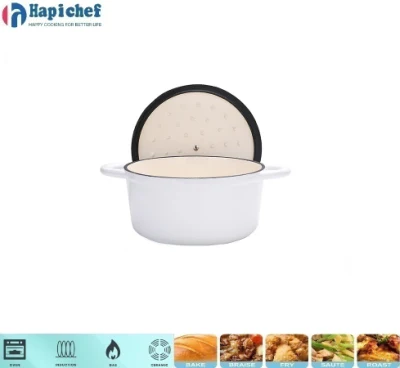stripping a cast iron skillet factory
Stripping a Cast Iron Skillet A Comprehensive Guide
Cast iron skillets are renowned for their durability, heat retention, and ability to develop a natural non-stick surface. Over time, however, these beloved kitchen tools can fall victim to rust, burnt-on residue, and a loss of seasoning. Stripping a cast iron skillet to restore its original beauty and functionality may seem daunting, but with the right approach, you can revive your skillet and extend its life for many more delicious meals.
Understanding Cast Iron
Before diving into the stripping process, it's essential to understand what makes cast iron unique. Cast iron skillets are made from molten iron poured into molds, resulting in a heavy yet sturdy cooking surface. They require regular seasoning—an application of oil that, when heated, forms a non-stick coating. This seasoning is what gives cast iron its character and, if neglected, can lead to the need for stripping.
Reasons for Stripping
You might need to strip your cast iron skillet for several reasons
1. Rust Exposure to moisture can lead to rust, indicating that it’s time for a thorough cleaning. 2. Stuck-on food Over time, food residues can accumulate and cause the skillet not to perform optimally. 3. Uneven seasoning If the seasoning layer is patchy or flaking off, it's best to start fresh.
Tools Needed
Before starting the stripping process, gather the following tools and materials
- Steel wool or a heavy-duty scrubber - Baking soda - Vinegar or a commercial rust remover - Plastic scraper or spatula - A well-ventilated workspace - Cooking oil (flaxseed, canola, or vegetable oil) - Paper towels or clean cloths - An oven
The Stripping Process
Step 1 Assess the Skillet's Condition
Examine your skillet carefully. Identify areas with rust, food buildup, or uneven seasoning. This assessment will help you know how extensive the stripping needs to be.
Step 2 Initial Cleaning
stripping a cast iron skillet factory

Rinse your skillet with hot water and scrub it using steel wool to remove as much surface debris as possible. For tougher residues, sprinkle some baking soda directly onto the area, adding a small amount of water to create a paste. Let it sit for a few minutes before scrubbing again.
Step 3 Vinegar Soak (if necessary)
If rust or severe discoloration persists after scrubbing, create a mixture of equal parts vinegar and water and soak your skillet for about an hour. The acid from the vinegar will help break down stubborn rust. Be cautious not to soak it for too long, as prolonged exposure can begin to deteriorate the cast iron itself.
Step 4 Final Scrubbing
After soaking, scrub the skillet thoroughly with steel wool or a stiff brush. You should aim to eliminate all signs of rust and residue. Rinse it thoroughly and dry it immediately with a cloth or paper towel to prevent any new rust from forming.
Step 5 Re-seasoning
Once your skillet is stripped and clean, it’s time to re-season it. Start by applying a thin layer of cooking oil all over the skillet, including the handle and underside. Wipe any excess oil away to prevent a sticky residue.
Step 6 Baking
Place the oiled skillet upside-down in a preheated oven at 450-500°F (230-260°C). Bake it for one hour. This process polymerizes the oil, creating a new non-stick layer. It’s beneficial to place a baking sheet on the rack below to catch any drips. After the hour is up, turn off the oven and let the skillet cool completely inside.
Maintenance Tips
To keep your cast iron skillet in top condition
- Clean it with hot water and a brush, avoiding soap if possible. - Dry it thoroughly after cleaning to prevent rust. - Apply a thin layer of oil after each use to maintain the seasoning.
Stripping and re-seasoning your cast iron skillet might seem like a challenging task, but it’s a rewarding process that will breathe new life into your cookware. With a little effort, your restored skillet can serve as a versatile and cherished kitchen companion for generations. So roll up your sleeves, and enjoy the journey of reviving this timeless culinary tool!
-
Why Every Home Cook Needs a Cast Iron Meat PressNewsNov.12,2024
-
Unlock Perfectly Seared Steaks with the Cast Iron Meat PressNewsNov.12,2024
-
Master the Art of Cooking Thick Cuts of Meat with a Cast Iron Meat PressNewsNov.12,2024
-
How to Care for Your Cast Iron Meat Press: Tips for Longevity and PerformanceNewsNov.12,2024
-
How a Cast Iron Meat Press Enhances the Flavor and Texture of Your BurgersNewsNov.12,2024
-
Roasting Pan for Perfect MealsNewsNov.04,2024
-
Perfect Skillet for SaleNewsNov.04,2024
